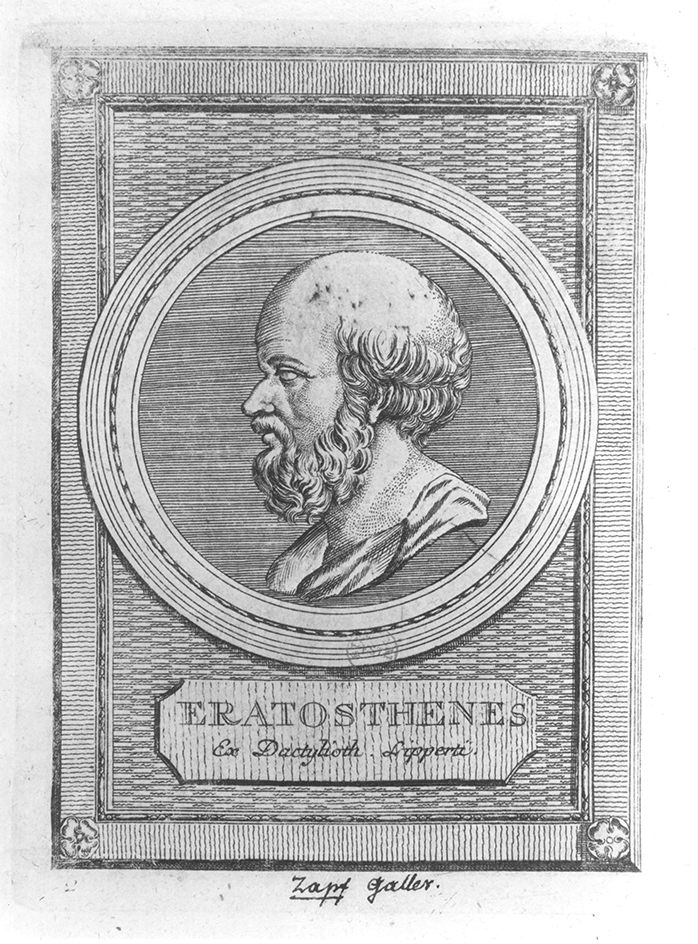Eratosthenes, << ehr uh TOS thuh neez >> (276?-195? B.C.), was a Greek mathematician. He found a way of measuring the distance around the earth without leaving northern Africa, where he lived. Eratosthenes also developed the Sieve of Eratosthenes–a method of identifying prime numbers (see Sieve of Eratosthenes ).

Eratosthenes was born in Cyrene, a Greek town in northern Africa. Like other Greek scientists of his time, he knew that the earth was round. He observed that shadows at noon grew shorter as he got closer to the equator. Eratosthenes also knew that at noon on the day of the summer solstice in Alexandria, Egypt, a vertical post casts a shadow. But at noon in Syene, a town to the south, a vertical post casts no shadow.
Eratosthenes based his calculation on geometry. He measured the angle formed by the post and an imaginary line from the end of the shadow to the top of the post. By treating the sun’s rays as parallel, he could assume that the measured angle equaled the angle formed at the earth’s center by imaginary lines from the two towns. He then calculated the earth’s circumference by measuring the distance between Alexandria and Syene and multiplying it by the number of times the angle at the earth’s center goes into 360°. His measurement of the earth’s polar circumference was between 28,000 and 29,000 miles (45,000 and 47,000 kilometers). The actual value is 24,860 miles (40,008 kilometers).
